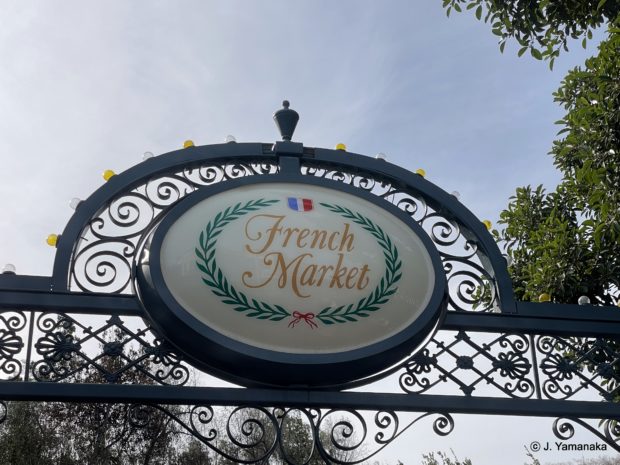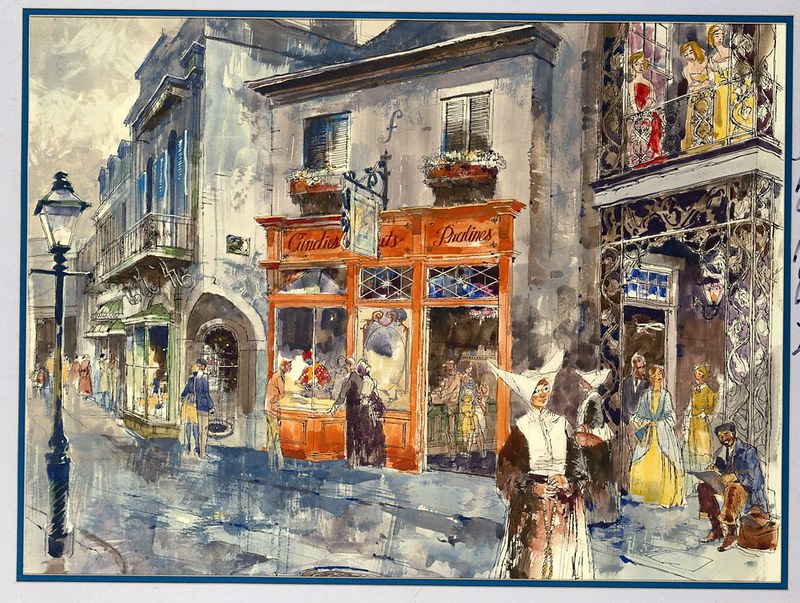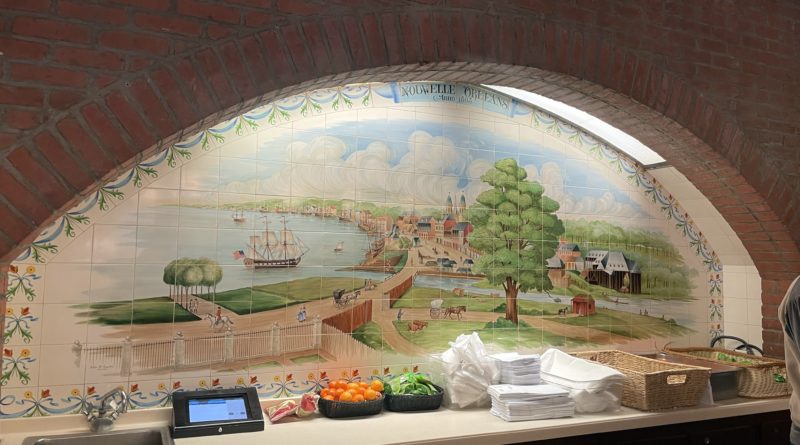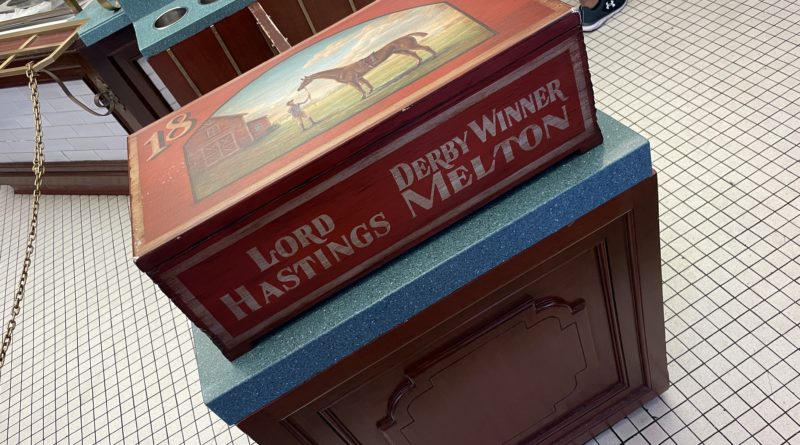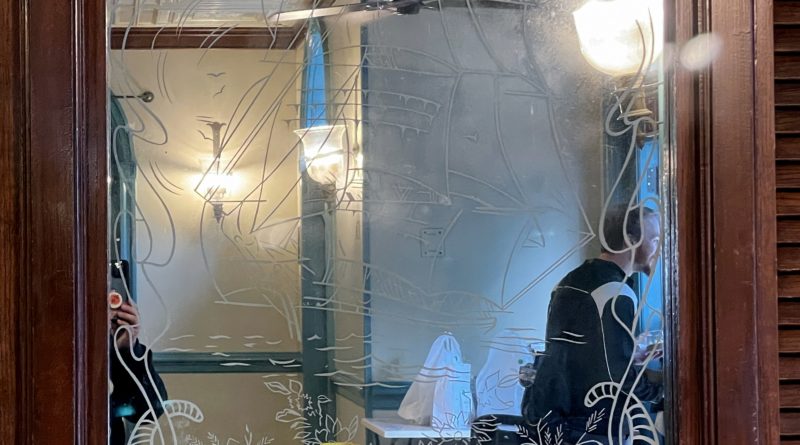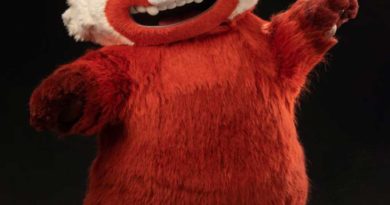Jeanine Bids Adieu to French Market @ Disneyland
Editor’s note: French Market Restaurant in New Orleans Square at Disneyland opened on July 24, 1966 and closed on February 16, 2023. The restaurant will reopen later this year as Tiana’s Palace. Jeanine visited on the final day of operation and shares some history, thoughts & reflections –
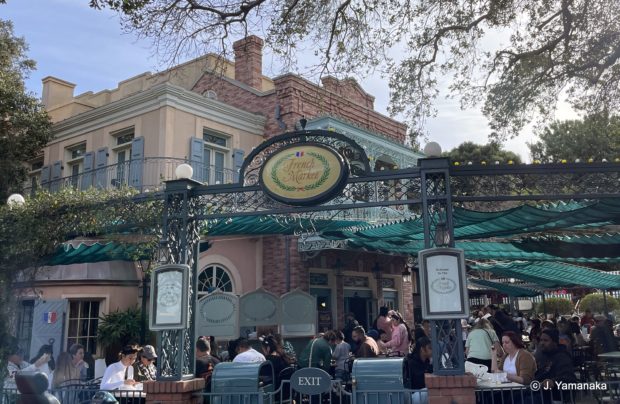
In 1682, the French claimed a large swath of North America from Hudson Bay to the Gulf of Mexico, and from the North Atlantic to the Great Plains and called it the Louisiana Territory (La Louisiane) in honor of King Louis XIV. French settlers soon capitalized on the strategic shipping location on the Mississippi Delta and developed a bustling port town known as New Orleans. Within the city, a walled village was created with streets named after French royalty known as The French Quarter. With time, the boisterous city became known for its French cuisine and vibrant African-American culture which gave birth to musical forms such as jazz and the blues.

As the years passed, New Orleans went through a tumultuous history which involved it being ceded to Spain with the Treaty of Fontainebleau, then back to France with the Treaty of San Ildefonso, and then finally sold to the US in 1803 along with the rest of the Mississippi River Valley in the massive Louisiana Purchase. Only 163 years later, Walt Disney opened up New Orleans Square as the first new land added to Disneyland since its opening.
[Herb Ryman’s “Candy Shop,” part of his collection of New Orleans Square concept art, located at the Ryman Arts Flickr album.]
While the land currently plays host to two of the most iconic Disney attractions, Pirates of the Caribbean and Haunted Mansion, it has always been well-known for its eclectic and genteel shops and dining offerings, one of which was the French Market.

Originally sponsored by Stouffers, the elegant twin buffeteria managed to survive the years with relatively few physical changes, up to its recent closure for remodeling. In Jim Korkis’ great Mouseplanet article “Profile of Disneyland’s New Orleans Square 1966” he includes part of a WED profile by Robert Jackson and Frank Allnutt, created for the opening of the land, which includes a short description of the French Market:
“All of the nostalgia and excitement of New Orleans’ old French Market is combined with dining and dancing beneath the multi-color canopy of the terrace of New Orleans Square’s largest restaurant, The French Market Restaurant on Esplanade Street.
Seating 250 guests at one time on the terrace, the restaurant serves guests at twin buffets – a technique which has proved highly successful in the Plaza Inn Restaurant on Disneyland’s Main Street Plaza. A dessert buffet is conveniently available to guests inside the building and on the terrace.
During the evening hours on the dining terrace, a gazebo by day becomes a bandstand where an ensemble plays music for dining and dancing.
Inside The French Market Restaurant, accents of ochre and green, a quarry-tile floor and a unique “pressed-tin” ceiling, typical of that period, combine with arched murals to add a special charm to New Orleans Square. A “domed skylight” illuminates the two ceramic tile murals depicting historic scenes of ceremonies at the Louisiana Purchase in 1803.
Guests enter The French Market across a mosaic threshold.
Punctuating the walls surrounding the murals are memorabilia of French kitchens, including polished pots and pans, cleavers, weights, duck presses, grinders and baskets, which were sought by the Disney staff over a period of years especially for New Orleans Square.”
As is the case with most of the early Disneyland construction, French Market was marked with the kind of thoughtful detailing that differentiated it from anything amusement park guests had experienced before. It was evocative of a time of energy and progress as well as a laid-back gentility that was a characteristic not only of New Orleans in the 1850s, but Disneyland in the 1960s. While its successor, Tiana’s Palace will no doubt possess its own attractions and be a welcome change for The Princess and the Frog fans…it’s a wistful thing to think back on the French Market with its ornate ironwork and etched glass, and on the many years guests were privileged to dine there, with a Mint Julep and a jazz band and a busy riverside, a world away from now.
